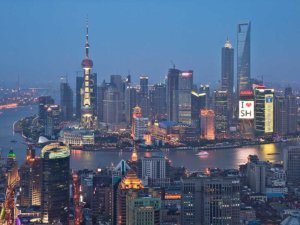What’s Next for the Chinese Economy?
After a period of remarkable growth, China now faces substantial economic and political challenges.
Topics
Since China began its economic reforms in 1978, its economy has grown substantially. GDP growth after inflation has averaged nearly 9% per year, a remarkable record by all accounts. Within just one generation, China has transformed itself from an economically impoverished and politically unstable country to the second-largest economy in the world. It has lifted more than 500 million people above the absolute poverty level, along with other notable but lesser-known achievements: China is the only developing country to have participated in the Human Genome Project and the first developing country to complete a manned space program.
But China now faces monumental challenges, both economic and political, in the years ahead. One thing we know about economic growth is that it typically slows down after a period of robust performance. Part of the reason for this slowdown is entirely benign: It is much more difficult for a country to grow at a sustainably fast pace when the per capita GDP is high than when per capita GDP is low. The consequences of a slowdown that occurs for that reason are as benign as its cause. Ultimately, it is a country’s level of development, not its growth rate, that matters for the welfare of its people. Rich countries — in other words, countries that have high per capita GDP — generally have higher standards of living, longer life expectancies and healthier populations than poorer but fast-growing countries. If China slows down due to the fact that it has become rich, this is cause for celebration rather than concern.
But herein lies the problem: The reasons behind China’s likely slowdown are not only because it has become a richer country. Other factors likely to impede China’s growth include the highly unbalanced structure of the Chinese economy and low levels of efficiency; despite more than three decades of reforms, China is still substantially statist in its basic orientation. As a result, for each percentage point of GDP growth, China requires more and more energy and investments, with very worrisome implications for its environment and for the health of its population.
References
1. See H. Kharas, “Developing Asia and the Middle-Income Trap,” East Asia Forum Quarterly 5, no. 2 (April-June 2013): 10-11.
2. S. Rozelle, “The China Threat: Fact or Fiction” (presentation at the International Politics and Economics Conference, Middlebury, Vermont, Sept. 21, 2012).
3. T. Picketty, “Capital in the Twenty-First Century,” trans. A Goldhammer (Cambridge, Massachusetts: Harvard University Press, 2014).
4. For more details, see Y. Huang, “Capitalism With Chinese Characteristics: Entrepreneurship and the State” (New York: Cambridge University Press, 2008).
5. B.M. Friedman, “The Moral Consequences of Economic Growth” (New York: Knopf, 2005).
6. D. Acemoglu and J. Robinson, “Why Nations Fail: The Origins of Power, Prosperity and Poverty” (New York: Crown Business, 2012).

